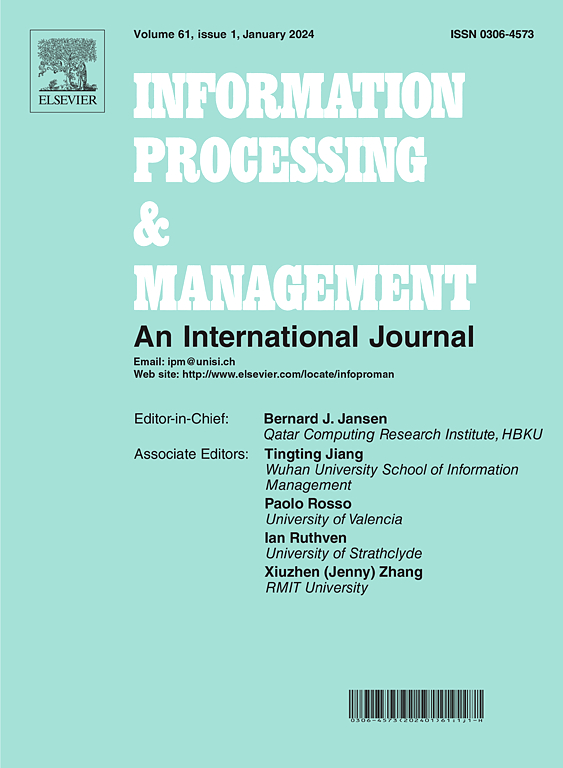Identification of interdisciplinary research patterns based on the functional structures of IMRaD
IF 7.4
1区 管理学
Q1 COMPUTER SCIENCE, INFORMATION SYSTEMS
引用次数: 0
Abstract
Interdisciplinary research has emerged as an important approach to tackling complex issues that cut across disciplines. Previous research assessed the interdisciplinarity of a paper without considering differences in functional structures. This study proposes a method to identify interdisciplinary research patterns by measuring the level of interdisciplinarity in research articles across four sections: Introduction, Methods, Results, and Discussion. With 19,712 articles in Bioinformatics, we revealed that interdisciplinarity typically arranges in the sequence of Introduction, Methods, Results, and Discussion. We also identified six patterns, each featuring specific high-interdisciplinary sections, including All-round Integration, Multidisciplinary Application Exploration, Multidisciplinary Background Research, Multidisciplinary Approach, Interdisciplinary Analysis, and Non-Interdisciplinary Research. We further investigated the academic value of interdisciplinary research through citation impact and novel insights. Even with low citation counts, the number of high-level interdisciplinary research continues to grow. The topic analysis also demonstrated that different interdisciplinary research patterns prioritize certain aspects to solve the core problems of a research field. Moreover, the research focus of each pattern is consistent with the function of its highly interdisciplinary sections. For example, in protein structure research, the Multidisciplinary Approach pattern prioritizes accurate modelling and techniques, while the Multidisciplinary Application Exploration pattern emphasizes biological applications such as vaccine development. These findings provide management with guidance on how to encourage interdisciplinary research that genuinely contributes to innovation.
求助全文
约1分钟内获得全文
求助全文
来源期刊

Information Processing & Management
工程技术-计算机:信息系统
CiteScore
17.00
自引率
11.60%
发文量
276
审稿时长
39 days
期刊介绍:
Information Processing and Management is dedicated to publishing cutting-edge original research at the convergence of computing and information science. Our scope encompasses theory, methods, and applications across various domains, including advertising, business, health, information science, information technology marketing, and social computing.
We aim to cater to the interests of both primary researchers and practitioners by offering an effective platform for the timely dissemination of advanced and topical issues in this interdisciplinary field. The journal places particular emphasis on original research articles, research survey articles, research method articles, and articles addressing critical applications of research. Join us in advancing knowledge and innovation at the intersection of computing and information science.
 求助内容:
求助内容: 应助结果提醒方式:
应助结果提醒方式:


